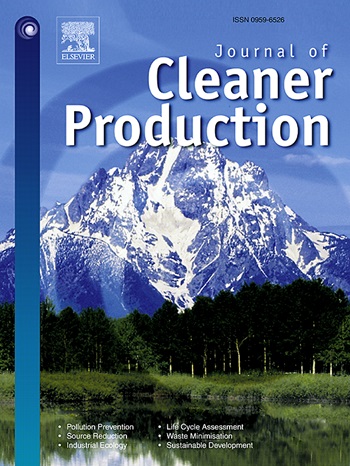城市水-能-粮关系系统多时期效率的时空异质性
IF 10
1区 环境科学与生态学
Q1 ENGINEERING, ENVIRONMENTAL
引用次数: 0
摘要
经济的快速增长推动了水、能源和食品的消费激增,造成了资源短缺,威胁到区域的可持续发展。为了解决这一问题,中国实施了一系列“红线”政策,目的是提高资源利用效率。虽然单一资源的有关战略可能对子系统有利,但它们可能对水-能源-粮食联系系统产生无效甚至消极的影响。因此,从世界经济论坛体系的角度来量化和提高投入产出效率势在必行。研究主要是从静态角度或仅从网络效率角度计算效率;然而,很少有研究同时考虑WEFN系统的动态特性和网络结构。在驱动因素分析方面,很少有研究揭示了不同时空因素对效率的影响。为了解决这些问题,本研究提出了一个动态网络数据包络分析(DEA)模型,该模型同时捕获了子系统的相互作用和跨期联系。该模型通过整合水、能源和粮食子系统之间的反馈机制,同时纳入连续时期的资本存量动态,提高了测量精度。此外,采用地理时间加权回归(GTWR)模型分析了效率驱动因素的时空变化影响。为了说明这些模型的应用,本研究以中国广东省为例进行了研究。结果表明:各省区效率呈倒u型趋势,从2010年的0.296上升到2021年的0.731,之后略有下降;在空间上,效率呈径向梯度,在珠三角地区达到峰值,向周边地区逐渐减弱。粤北成为效率最低的次区域,制约了整个系统的绩效。空间自相关分析表明,尽管Moran's I值从0.33下降到0.21,但持续的正聚类效应表明区域差异随着时间的推移而减小。结果表明,城市化水平、技术进步和环境治理是正向驱动因素,而产业发展是负向驱动因素。这些因素表现出显著的异质性,城市化显著有利于粤西地区,而技术和环境干预对珠三角地区的改善效果最大。这些发现为差别化政策的制定提供了可操作的指导。像珠三角这样的核心地区需要先进的循环经济战略来克服资源饱和,而外围地区则需要有针对性的基础设施和创新投资。本文章由计算机程序翻译,如有差异,请以英文原文为准。


Spatio-temporal heterogeneity of multi-period efficiency in an urban water-energy-food nexus system
Rapid economic growth has driven surging consumption of water, energy, and food, creating resource scarcity that threatens regional sustainable development. To address this issue, China has implemented a series of "red line" policies, with the objective of improving the efficiency of resource use. While the relevant strategies of a single resource may prove beneficial to a subsystem, they may have an ineffective and even negative impact on the Water-Energy-Food Nexus (WEFN) system. Therefore, it is imperative to quantify and improve the input-output efficiency from the perspective of the WEFN system. Research primarily calculates efficiency from a static perspective or network efficiency alone; however, few studies have simultaneously considered the dynamic characteristics and network structure of the WEFN system. In terms of drivers analysis, few studies have revealed the impact of factors on efficiency across time and space. To address these issues, this study proposed a dynamic network Data Envelopment Analysis (DEA) model that captures both subsystem interactions and intertemporal linkages. The model enhances measurement accuracy by integrating feedback mechanisms between water, energy, and food subsystems while incorporating capital stock dynamics across consecutive periods. Furthermore, a Geographically Temporally Weighted Regression (GTWR) model was employed to elucidate the spatiotemporally varying impacts of efficiency drivers. To illustrate the application of these models, this study conducted a case study in Guangdong Province of China. The results indicate that provincial efficiency followed an inverted U-shaped trend, increasing from 0.296 in 2010 to 0.731 in 2021, followed by a slight decline. Spatially, efficiency demonstrated a radial gradient, peaking in the Pearl River Delta and diminishing toward peripheral regions. Northern Guangdong emerged as the least efficient subregion, constraining overall system performance. Spatial autocorrelation analysis identified persistent positive clustering effects, though Moran's I values declined from 0.33 to 0.21, indicating reduced regional disparities over time. GTWR results highlighted urbanization level, technological progress, and environmental governance as positive drivers, while industrial development exerted negative impacts. These factors demonstrated significant heterogeneity, urbanization markedly benefited Western Guangdong, whereas technological and environmental interventions yielded the greatest improvements in the Pearl River Delta. These findings provide actionable guidance for differentiated policy formulation. Core regions like the Pearl River Delta require advanced circular economy strategies to overcome resource saturation, whereas peripheral areas necessitate targeted investments in infrastructure and innovation.
求助全文
通过发布文献求助,成功后即可免费获取论文全文。
去求助
来源期刊

Journal of Cleaner Production
环境科学-工程:环境
CiteScore
20.40
自引率
9.00%
发文量
4720
审稿时长
111 days
期刊介绍:
The Journal of Cleaner Production is an international, transdisciplinary journal that addresses and discusses theoretical and practical Cleaner Production, Environmental, and Sustainability issues. It aims to help societies become more sustainable by focusing on the concept of 'Cleaner Production', which aims at preventing waste production and increasing efficiencies in energy, water, resources, and human capital use. The journal serves as a platform for corporations, governments, education institutions, regions, and societies to engage in discussions and research related to Cleaner Production, environmental, and sustainability practices.
 求助内容:
求助内容: 应助结果提醒方式:
应助结果提醒方式:


